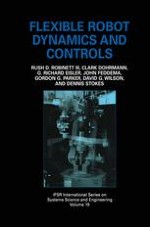This book is the result of over ten (10) years of research and development in flexible robots and structures at Sandia National Laboratories. The authors de cided to collect this wealth of knowledge into a set of viewgraphs in order to teach a graduate class in Flexible Robot Dynamics and Controls within the Mechanical En gineering Department at the University of New Mexico (UNM). These viewgraphs, encouragement from several students, and many late nights have produced a book that should provide an upper-level undergraduate and graduate textbook and a reference for experienced professionals. The content of this book spans several disciplines including structural dynam ics, system identification, optimization, and linear, digital, and nonlinear control theory which are developed from several points of view including electrical, me chanical, and aerospace engineering as well as engineering mechanics. As a result, the authors believe that this book demonstrates the value of solid applied theory when developing hardware solutions to real world problems. The reader will find many real world applications in this book and will be shown the applicability of these techniques beyond flexible structures which, in turn, shows the value of mul tidisciplinary education and teaming.
